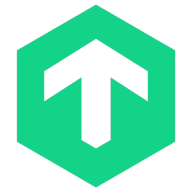

Sumo Logic Observability and Checkmk are prominent players in the observability and monitoring space, both enhancing IT infrastructure management. Checkmk has a competitive edge with its superior features and cost efficiency, making it a compelling choice despite Sumo Logic's advantages in pricing and support.
Features: Sumo Logic Observability provides sophisticated cloud-native analytics, security integration, and easy custom field creation, suitable for complex cloud environments. Checkmk offers robust monitoring, auto-discovery of services, and integration with event management tools, excelling in both cloud and on-prem environments with enhanced scalability and interoperability.
Room for Improvement: Sumo Logic Observability could improve on its steep learning curve, recruiting proficient users, and flexibility in query language. Checkmk may enhance its ease of use, offer more comprehensive integration capabilities, and refine its automation features to better compete with more expensive tools.
Ease of Deployment and Customer Service: Sumo Logic Observability offers cloud-based deployment, providing seamless integration but challenges for on-premise users. Checkmk stands out with flexibility in both cloud and on-premise deployment, supported by comprehensive documentation and a more adaptable service model for varied infrastructure needs.
Pricing and ROI: Sumo Logic Observability incurs higher upfront costs through its SaaS model, providing operational efficiency that justifies its pricing. Checkmk offers a cost-effective setup with a transparent, scalable pricing structure, ensuring better ROI for businesses with budget constraints and diverse needs.
| Product | Market Share (%) |
|---|---|
| Checkmk | 5.4% |
| Sumo Logic Observability | 0.3% |
| Other | 94.3% |


| Company Size | Count |
|---|---|
| Small Business | 4 |
| Midsize Enterprise | 3 |
| Large Enterprise | 2 |
Checkmk provides a comprehensive monitoring solution designed to streamline IT infrastructure management with features like auto-discovery, custom checks, and effective alerting.
Checkmk serves as a powerful tool for organizations managing large networks of servers, databases, and network appliances across multiple locations. It simplifies monitoring tasks with features like auto-discovery, custom scripting, and Slack integration. Users benefit from its resource monitoring capabilities and scalability, although there are areas for improvement, such as alert acknowledgment and greater usability. It supports both Linux and Windows environments, enabling effective oversight of IT infrastructure. The growing body of documentation enhances its adaptability in complex settings.
What are the key features of Checkmk?Industries deploying Checkmk frequently utilize it for monitoring IT infrastructure, including servers and network appliances, to manage proactive issue identification and compliance. Companies employ it in the proof of concept phase or for ongoing monitoring, covering hosts, services, and custom application metrics.
Sumo Logic Observability offers advanced monitoring solutions with features like integrated dashboards and querying capabilities, though presents a learning curve compared to alternatives. Designed for efficient log aggregation and analysis, it provides near-real-time updates facilitating improved incident resolution.
Sumo Logic Observability stands out with its ability to unify teams through a single platform, offering features that include customizable dashboards and valuable apps. It provides powerful log tracing and centralized management, designed for organizations focused on log aggregation, analysis, and expanding SIEM capabilities. While it has a steeper learning curve compared to some competitors, it excels in tailored integrations that enhance log searches. Users find themselves able to monitor, automate, and centralize log repositories for effective debugging. Despite its strengths, improvements in data enrichment and documentation organization are needed as current query functions can be slow, impacting efficiency. Users have also mentioned needing pre-built dashboards and better tab management for enhanced functionality. Cost management remains a notable consideration for users evaluating Sumo Logic Observability.
What features make Sumo Logic Observability effective?Sumo Logic Observability is implemented across industries predominantly for managing and analyzing extensive data sets, offering capabilities critical for SIEM activities and security examinations. By facilitating quick data visualization and transaction tracking, organizations in sectors such as finance, healthcare, and technology benefit from its robust framework to support infrastructure logging and large-scale data management, contributing to effective monitoring and system operations.
We monitor all Cloud Monitoring Software reviews to prevent fraudulent reviews and keep review quality high. We do not post reviews by company employees or direct competitors. We validate each review for authenticity via cross-reference with LinkedIn, and personal follow-up with the reviewer when necessary.